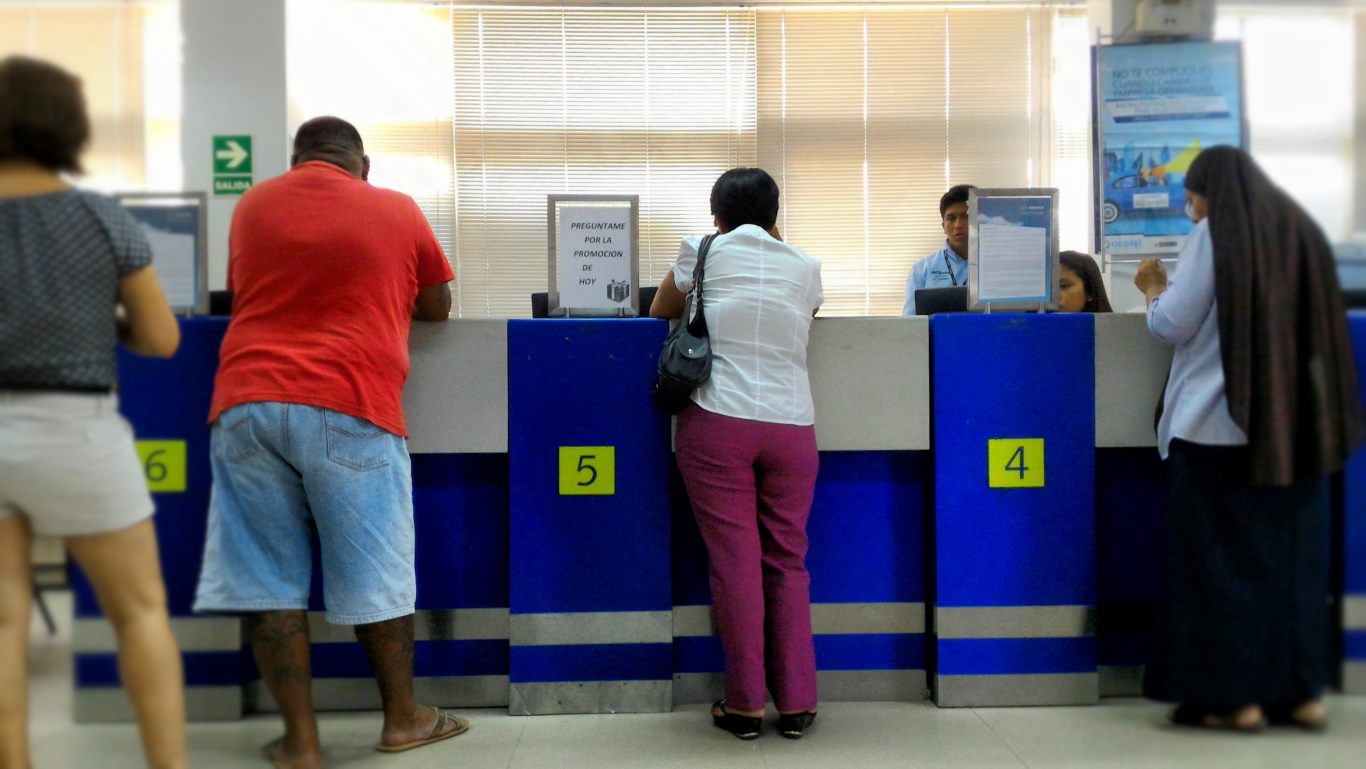Peruvians waiting to pay their internet and telephone bills. Photo by Tony Dunnell.
The current minimum wage in Peru is S/ 930 (soles) per month. At time of writing, that’s about $284 (US dollars). The minimum wage in Peru was last raised in April 2018 by President Pedro Pablo Kuczynski. He announced the wage rise shortly before he resigned in March 2018.
To get a rough idea of what that number means for the average Peruvian worker — and how it reflects both the cost of living and traveling in Peru — we can compare it to other nations in the region and globally. But we also need to keep in mind Peru’s informal sector, which is a huge part of the country’s economy.
soles per month
US dollars per month
Recent History of the Minimum Wage in Peru
Peru is a developing country with plenty of natural resources and a strong economy. The minimum wage (sueldo mínimo or salario mínimo) in Peru continues to rise, albeit not enough according to some (and too much according to others, who argue it fuels Peru’s massive informal sector; more on that below).
Since the year 2000 (the last year of Alberto Fujimori’s controversial reign as President of Peru), the minimum wage has more than doubled, rising from S/ 410 to the current S/ 930.
The minimum wage increased twice during the administration of former President Ollanta Humala, from S/ 675 up to S/ 750 in June 2012, and from S/ 750 to S/ 850 in May 2016. At the time of the last minimum wage increase, Peru’s Confederation of Workers was demanding S/ 1,500.
Minimum Wage in Peru Compared to Other Nations
As of June 2018, Peru occupies seventh place in the minimum wage rankings of South America. The rankings for the top nine countries are as follows (monthly minimum wage in dollars, followed by local currency). The dollar conversion fluctuates a lot, so the rankings below can shift quite easily. Argentina, for example, had the highest minimum wage in South America not long ago, but has since dipped significantly against the dollar:
| Country | Dollars | Local Currency |
|---|---|---|
| Chile | $437 | 276,000 Chilean pesos |
| Uruguay | $431 | 13,430 Uruguayan pesos |
| Ecuador | $386 | $386 |
| Argetina | $380 | 9,500 Argentine pesos |
| Paraguay | $345 | 1,964,507 guaraníes |
| Bolivia | $297 | 2,060 bolivianos |
| Peru | $284 | 930 soles |
| Colombia | $270 | 781,242 Colombian pesos |
| Brazil | $256 | 954 Brazilian reais |
Further afield, the Federal minimum wage in the United States currently stands at $7.25 an hour, which works out at about $1,200 per month — significantly more than in any South American nation.
In the United Kingdom, the current minimum wage is £7.50 ($9.59) an hour for workers age 25 and over. That’s about $1,550 per month.
Reality Check: The Minimum Wage and Peru’s Massive Informal Economy
According to a 2016 study by Peru’s National Institute of Statistics and Information (INEI), the informal sector has represented 19% of Peru’s total economy in the last decade. The report also states that informal employment in Peru is at a massive 73.2%.
These figures are backed up by a separate study by BBVA Research, whose findings were published in January 2017. The report revealed informal employment to be about 71% — meaning that more than 7.5 million Peruvians are working informally.
This obviously means that the minimum wage can be circumvented by many informal employers. At ground level, that’s easy to see. In any Peruvian city, you don’t have to look hard to find waiters, bar staff, hotel receptionists, maids and more being paid cash-in-hand at less than the national minimum wage (sometimes significantly less).
The amount of Peruvians who actually benefit from a rise in the minimum wage is therefore debatable — and potentially minimal.






The cost of living in any particular country depends on a lot more than merely the minimum wage or even the definition of “minimum wage” in each particular country.
I agree.
Good information, in this world economic the people must know the wages on any country of the world, jobs opportunities and cost of living. to seek a better country to live in dignity. World economic conditions is an information that most people need if they want to get the best of their working years and retire in the country of their choice.